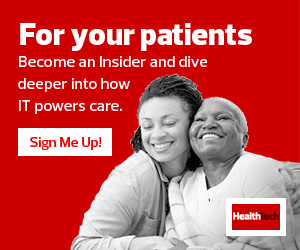A demographic distribution shift is well underway. According to predictions from the U.S. Census Bureau, by 2034 the number of people over age 65 will outnumber those under age 18 for the first time in history.
The result? With more Baby Boomers making the move into long-term care (LTC) or hospice care, the pressure to provide comprehensive, patient-centered care increases. The use of cameras in senior care centers offers one way for families to stay in touch and for staff members to monitor residents’ health, but the collection and use of this video data comes with potential privacy and process pitfalls.
Here’s what care providers need to know about best practices in senior care monitoring.
A Case for Cameras in Senior Care Centers
The concept of cameras in senior care centers isn’t new, but recent discussions have centered on the legality of patients or their families purchasing and installing cameras to monitor their loved ones. Connecticut recently passed legislation allowing video devices in rooms, and states such as Georgia are following suit.
But there’s an emerging case for facility-owned and operated cameras that could allow staff members to monitor the status of multiple patients from a single, centralized station rather than requiring continual, physical checks. Not only could this reduce total costs for care providers but it could also significantly improve response times if issues arise. If residents fall or become unresponsive, monitored cameras allow employees to react quickly. If staff members are down the hall in another patient’s room, however, a significant amount of time could pass before they discover that a fall has occurred.
Ensuring HIPAA Compliance When Monitoring in Senior Centers
According to Neil Lappage, public sector solutions lead at ITC Secure and member of ISACA’s Emerging Technology Advisory Group, the use of high-quality security cameras for assisted living offers several benefits, including:
- Peace of mind. “From both sides of the story, we’ve got peace of mind and daily assurance,” says Lappage. “Having updates in real time provides assurance for both sides, patients and doctors.” Families also benefit from knowing that their loved ones are receiving more reliable care.
- Real-time response. Lappage puts it simply: “Real-time monitoring will reduce the time to diagnosis, along with the time to correct and resolve issues.” Consider a patient with pre-existing conditions who falls unexpectedly. Mere minutes could make a difference between a full recovery and the potential for long-term complications or death.
- Ease of access. Lappage also points to the benefits of video systems tied into broader patient health solutions, which allow staffers to quickly access relevant patient data on demand to deliver targeted care.
Lappage is clear, however, about potential concerns with connected cameras. The first issue is compliance. “For HIPAA, there’s a requirement for end-to-end encryption when the data is classified as clinical or medical, and there will be some facilities that aren’t compliant with HIPAA,” he says.
Cyberattacks are also problematic, especially “man in the middle” attacks that look to eavesdrop on camera operations and access protected data. While wearable devices such as pacemakers are difficult to compromise because they require physical access, connected cameras could be hijacked by cybercriminals and compelled to shut off unexpectedly or record data without patient approval.
Finally, standardization remains a challenge. “The proliferation of diagnostic technologies has led to a lack of standardization,” says Lappage. “There’s a growing need for conformity so providers know that when they buy a product, it’s secure.” He also highlights the emerging risks of rapid device rollouts during the pandemic to improve patient, provider and family connections, noting that “shortcuts during the pandemic rollout may require long-term improvements.”
LEARN MORE: Hospitals’ in-room cameras enable seamless visits and better safety.
Best Practices for Monitoring in Senior Care Centers
How do care facilities looking to leverage the value of connected camera technologies increase compliance and limit overall risk?
Lappage suggests three best practices:
- Improve access security. Like many Internet of Things devices, connected cameras often come with default access permissions and simplistic (or absent) login/password combinations. Lappage recommends that healthcare providers enhance basic security with multifactor authentication (MFA) tools. “One of the really important issues here is MFA to prevent unauthorized access,” he says. “Many systems do not have MFA, and password protection isn’t enough.”
- Implement privacy by design. “Facilities need to implement privacy by design. This requires identifying common security challenges and wrapping security controls around the technology,” says Lappage. “In practice, this means only collecting the data necessary to deliver patient-centric care. For facilities in the U.S., it means making sure data doesn’t leave the country to ensure HIPAA obligations are met.”
- Integrate patient accessibility. To ensure broad adoption, providers must also consider the need for patient and family buy-in. This starts with clear communication about how data will be handled, stored and used, but also includes the deployment of technologies that patients are capable of interacting with — even if they have limited digital literacy. “Accessibility is critical,” says Lappage. “It’s really important to make sure that the user interface design of products is accessible for people with lower digital literacy to ensure people are comfortable.”
With care communities now facing an unprecedented surge in resident populations, connected camera technologies offer a way to deliver patient-centric care without breaking the bank. However, adoption and installation aren’t enough in isolation — providers must integrate video monitoring best practices to reduce attack risk, enhance regulatory compliance and ensure patient buy-in.












